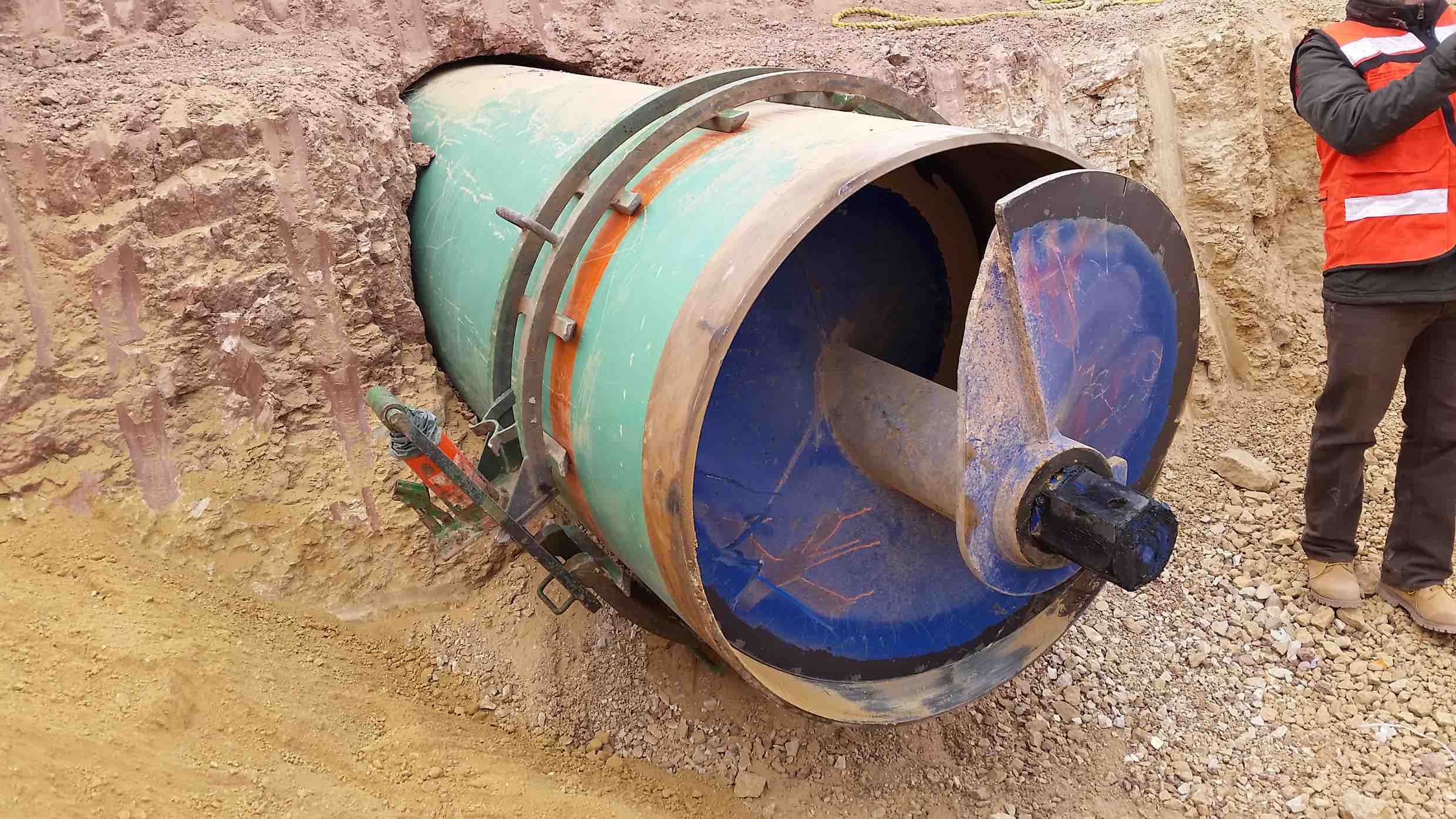June 2017, Vol. 244, No. 6
Features
Work Progresses on Vital Natural Gas Pipeline in Mexico

It is estimated by 2028 there will be 393 MMcf/d of natural gas needed by power generation plants in the states of Chihuahua and Durango, according to a technical study by Mexico’s state-owned electric utility Comisión Federal de Energía (CFE) (Federal Electricity Commission).
The El Encino-La Laguna Pipeline is a natural gas pipeline from El Encino Compression Station in the state of Chihuahua to the Lerdo Power Plant in the state of Durango. The project’s engineering, procurement and construction activities were assigned to GDI Sicim Pipelines S.A., a Mexican construction company comprised of Grupo Desarrollo Infraestructura (GDI) and Sicim.
The project, awarded in December 2014 by Fermaca, requires construction of a 42-inch pipeline running 257 miles (414 km) and supplying 1.5 Bcf/d of natural gas to power plants in Chihuahua and Durango states, bolstering economic development in the central-occidental areas of Mexico.
The pipeline connects 10 municipalities in the state of Chihuahua (Chihuahua, Rosales, Delicious, Satevó, Valle de Zaragoza, Hidalgo del Parral, Allende, López, Coronado and Jiménez), as well as three in the state of Durango (Hidalgo, Mapimi and Lerdo).
The project is divided in two phases. The first will provide gas to the power plant at Delicias, Chihuahua through construction of 42-inch pipe, running 41 miles (67 km) and a 16-inch pipeline running 28 miles (45 km), which was completed in August 2016.
The second phase will transport gas to the Lerdo power plant through construction of a 42-inch pipeline running 215 miles (347 km), and a 20-inch pipeline running 6 miles (10 km) to be completed by December. The project includes installation of three metering, regulation and control stations, one already completed in Delicias and two under construction in Lerdo and Leon Guzman.
Grup Servicii Petroliere (GSP) will soon start two important projects for the main distribution network: The La Laguna-Aguascalientes Pipeline, the first 48-inch pipeline in Mexico, will be 280 miles (450 km) long. The other is the Villa de Reyes-Aguascalientes-Guadalajara Pipeline (340 km), which will consist of 211 miles (340 km) of 36-inch, along with a 27-mile (43-km) branch of 20-inch pipe.
The work poses challenges due to remote locations along with the absence of suitable infrastructure and topographic soil conditions. One-fifth of the route traverses rocks and hills with slopes of 15-35%. There are about 100 special crossings such as rivers, streams, channels, roads and railways.
For this reason, an unusually wide variety of machinery is needed during different phases of construction. The opening of the DDV requires dozer types CAT D6/D8, D8 with ripper and D10, in addition to the CAT 320, 330 and 450 JD excavators.
For the pipeline path, the excavator PMI-945, the vacuum 365 EXC-070, and Tractoc TRC152, 112, 068 and 044 are required. To lower pipes into trenches, the sideboom Pipelayer Crawler Tractor Fiat P 600, P 900 and PC 041, while the American Augers AA 48/54-900, along with the bender CC-005 were alternated for horizontal perforations based on soil types. Due to the diameter of the pipes, twin and quad welders were used to reduce certain operating costs.
The engineering phase was completed in April 2015, and procurement activities, which are 75% in place, should be completed in a few months. Construction activities began Nov. 4, 2015, are about 65% complete, and involve about a thousand direct and indirect employees from over 10 countries. About 100 pieces of heavy equipment were used, divided into three main work fronts.
Undoubtedly, out of the 122 special crossings, one of the most complicated was the crossing of the Rio San Pedro, Chihuahua. It was constructed with 42-inch API 5L-X70 steel tube with a thickness of 18.31. The pipe was lined with concrete with a 15-cm minimum thickness, complete with welded wire mesh located at the medium thickness of the concrete. The concrete coating guarantees the mechanical protection of the pipe as well as the weight necessary to avoid issues with floating.
The work was carried out by prefabricating the pipe section to be installed at the junction after having opened the trench to the depth of the project. The mechanical assembly of the pipe was performed outside the river bed. The tubes were aligned and the welding performed. After completing the pipe assembly, the sidewall prefabricated pipe was moved to its final place in the trench and covered with material from the excavation.





Comments